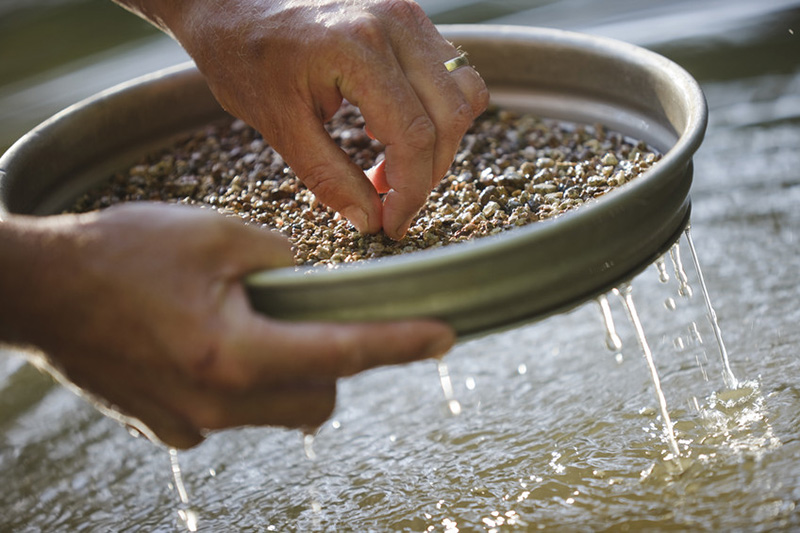Fossicking – Hidden Treasures
The Bingara District is a fossickers paradise. Whichever road you take out of town you will find a spot to fossick for gold, gems and crystals. It was the discovery of gold in 1852 that brought a flow of prospectors to the district and it continues to this day.
Many still try their luck with the help of mudmaps which are available from the Visitor Information Centre. The most successful areas being: Whitlow Road, Borah Creek on the Copeton Dam and Keera Roads and Ruby Hill on the Barraba Road. Good Luck!
Three Creeks Gold Mine
Three Creeks Gold Mine allows you to step back in time to the mining days of old. Learn the history of the mining site and browse through the artifacts displayed in the museum. You can have a look at the display of jewellery, gold, garnets, crystals and rock minerals, all of which are for sale. You can also try your hand at gold panning, panning for garnets or sieve for perfectly formed quartz crystals.
All Nations Hill Stamper Battery
A Stamper Battery on the southern outskirts of Bingara stands on the site of the former All Nations’ Gold Mine which closed in 1948. This site is testimony to the many miners, their hard work and all of their hopes & dreams.
Gem Collection
The gem and rock collection at the Bingara museum complex gives an idea of the range and scope of what can be found in the district. In addition to gold, there is also rhodonite, jasper, petrified wood, garnets, serpentine and diamonds.
Upper Bingara
It is estimated there were up to 500 Chinese mining in the Bingara district, particularly at Upper Bingara which was the biggest of the two settlements that occurred in the district after the discovery of gold in the 1850s. The only real evidence of their presence today is their cemetery and some scattered mine workings and water races.
Related pages:







